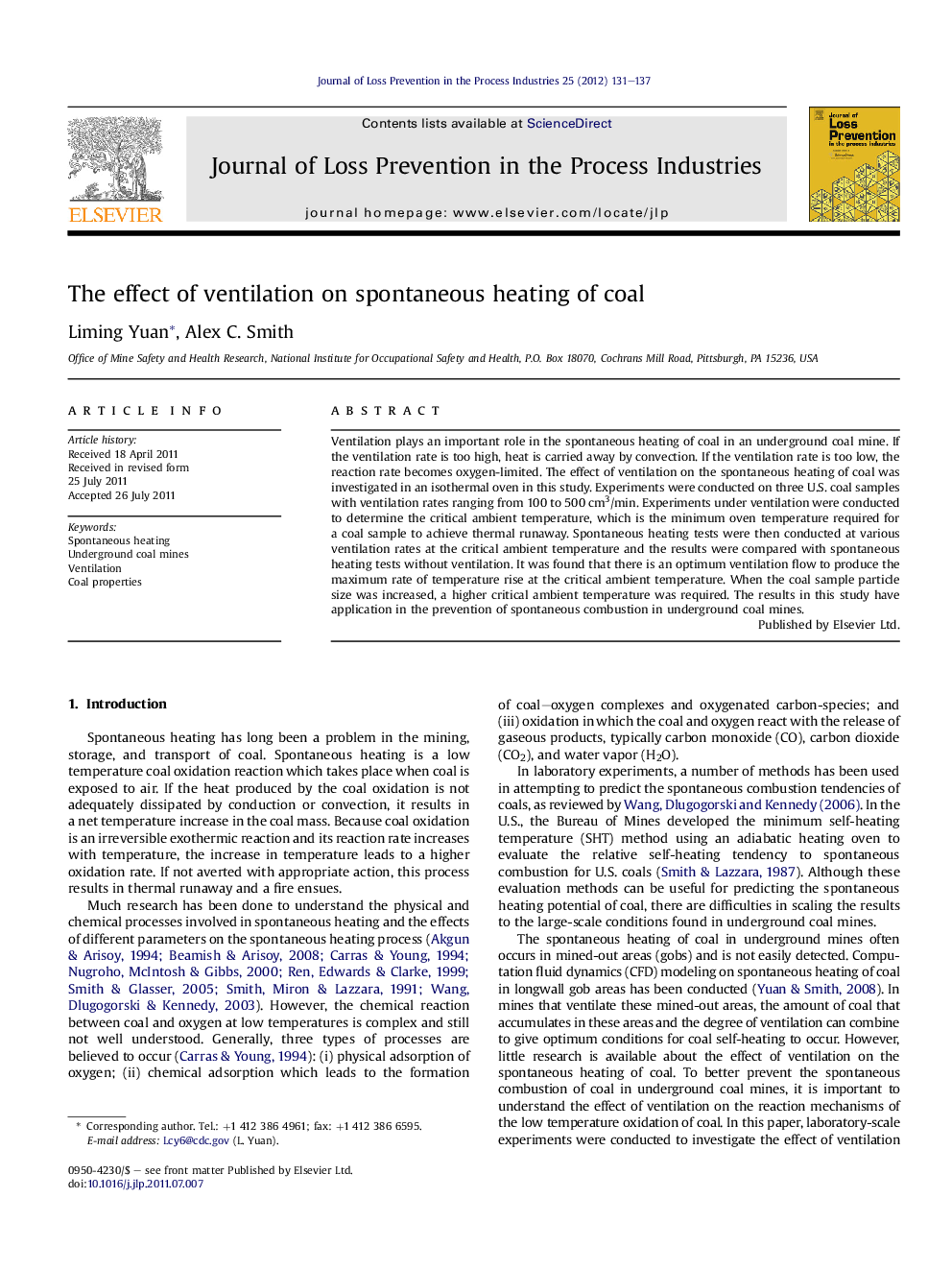| Article ID | Journal | Published Year | Pages | File Type |
|---|---|---|---|---|
| 586566 | Journal of Loss Prevention in the Process Industries | 2012 | 7 Pages |
Ventilation plays an important role in the spontaneous heating of coal in an underground coal mine. If the ventilation rate is too high, heat is carried away by convection. If the ventilation rate is too low, the reaction rate becomes oxygen-limited. The effect of ventilation on the spontaneous heating of coal was investigated in an isothermal oven in this study. Experiments were conducted on three U.S. coal samples with ventilation rates ranging from 100 to 500 cm3/min. Experiments under ventilation were conducted to determine the critical ambient temperature, which is the minimum oven temperature required for a coal sample to achieve thermal runaway. Spontaneous heating tests were then conducted at various ventilation rates at the critical ambient temperature and the results were compared with spontaneous heating tests without ventilation. It was found that there is an optimum ventilation flow to produce the maximum rate of temperature rise at the critical ambient temperature. When the coal sample particle size was increased, a higher critical ambient temperature was required. The results in this study have application in the prevention of spontaneous combustion in underground coal mines.
► Experiments were conducted to investigate the effect of ventilation on spontaneous heating of coal. ► A thermal runaway could be reached at a lower temperature with ventilation than without ventilation. ► It may take a much longer time to develop a fire compared to the unventilated state. ► For the more reactive coal, the minimum oxygen concentration required to sustain the coal oxidation was lower. ► With a larger size coal sample, a higher critical ambient temperature was needed to reach thermal runaway.
